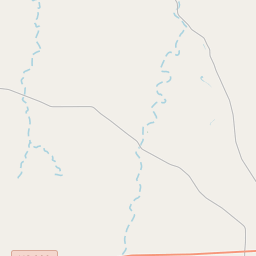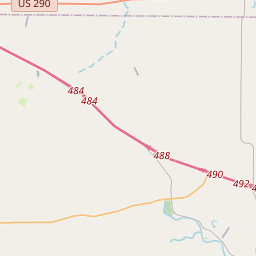St. James Lutheran Church
Historical marker location:












IN 1908, THE FIRST LUTHERAN MISSIONARY TO THE AREA, REV. C. STADLER, CAME TO HARPER. IN APRIL 1910, HE CONFIRMED THE FIRST CLASS OF LUTHERAN YOUNG PEOPLE. WHEN THERE WAS NO MISSIONARY ASSIGNED TO THE AREA, LUTHERAN PASTORS FROM NEIGHBORING CONGREGATIONS CAME TO SERVE. THE WORSHIP SERVICES WERE HELD AT THE BAPTIST, METHODIST AND PRESBYTERIAN CHURCH BUILDINGS OR HOMES AND THE HARPER HOTEL WHEN NONE OF THESE WERE AVAILABLE.
THE FIRST LUTHERAN CONGREGATION OFFICIALLY ORGANIZED ON MAR. 9, 1913, LED BY REV. B. SCHLIEFER. MRS. SOPHIE KLEIN DONATED HALF OF HER LOT ON MAIN STREET, AT THE CORNER OF WHAT IS NOW 4TH STREET, FOR THE BUILDING OF A CHURCH. THE NAME ST. JAMES WAS DECIDED ON AT A MEETING ON JAN. 11, 1914. THE CHURCH WAS BUILT IN THE SHAPE OF A CROSS AND ITS STEEPLE WAS IN THE FORM OF TRADITIONAL GERMAN CHURCHES. AT THE TIME, IT WAS HARPER’S LARGEST CHURCH BUILDING. THE DEDICATION SERVICE WAS ON JUL. 26, 1914. UNTIL 1918, THE GERMAN LANGUAGE WAS USED EXCLUSIVELY IN THE CHURCH. OVER TIME, ADDITIONAL LAND HAS BEEN PURCHASED, ANNEXES BUILT, AND REMODELING DONE. IN 1943, THE CONSTITUTION WAS REVISED AND THE CHURCH BECAME AFFILIATED WITH THE AMERICAN LUTHERAN CHURCH. THE CONGREGATION LATER ADOPTED A NEW CONSTITUTION, WHICH EVENTUALLY BECAME A PART OF THE EVANGELICAL LUTHERAN CHURCH OF AMERICA.
THE CHURCH HAS BEEN A LEADING PART OF THE COMMUNITY. IT HAS ORGANIZED A WOMEN’S SOCIETY, YOUNG PEOPLE’S GROUP, VACATION BIBLE SCHOOL AND SUNDAY SCHOOL. IT HAS ALSO HOSTED A REVIVAL-TYPE EVENT CALLED BRUSH ARBOR DAYS AND RAISED FUNDS FOR THE COMMUNITY HELP CENTER. THE CHURCH HAS HOSTED MANY CELEBRATIONS FROM BAPTISMS, CONFIRMATIONS, WEDDINGS AND BURIALS, TO THE ORDINATION OF PASTORS, HOLDING OF REUNIONS AND SCHOOL FUNCTIONS
As one of the most visible programs of the Texas Historical Commission (THC), historical markers commemorate diverse topics in Texas history, including: the history and architecture of houses, commercial and public buildings, religious congregations, and military sites; events that changed the course of local and state history; and individuals who have made lasting contributions to the state, community organizations, and businesses.
The cattle industry played a significant role in the development of Texas, with cowboys driving cattle from Texas to railheads in Kansas during the late 1800s and early 1900s.
The pioneer settlers of Gillespie County were mostly of German descent, seeking a new life and economic opportunities. They developed a thriving agricultural community, growing crops like cotton, corn, and wheat. The early settlers also established successful farms and ranches, making Gillespie County one of the leading agricultural regions in Texas.
During the Civil War, Gillespie County experienced some conflict and tensions due to the differing loyalties of its residents. However, after the war, the county experienced a period of growth and prosperity as the railroad reached Fredericksburg, the county seat, in 1913. This opened up new opportunities for trade and commerce, leading to economic development and population growth.
In recent years, Gillespie County has become a popular tourist destination, attracting visitors with its rich history, charming small towns, and beautiful natural surroundings. Today, the county is known for its wineries, historic sites, and festivals that celebrate its German heritage. It continues to thrive as a center of agriculture, tourism, and cultural preservation in the heart of the Texas Hill Country.
Gillespie County Timeline
This timeline provides a glimpse into the major events and milestones that have shaped the history of Gillespie County, Texas.
- 1848 - Gillespie County is established and named after Robert Addison Gillespie
- 1849 - The county seat is established in Fredericksburg
- 1850s - German immigrants begin settling in the area, shaping the county's culture and economy
- 1861-1865 - Gillespie County residents participate in the American Civil War
- 1880s - The county experiences growth with the arrival of the railroad and expansion of agriculture
- 1900s - Gillespie County faces challenges such as the 1900 storm and the Great Depression
- 1940s - Fort Mason is established as a training center during World War II
- 1970s - Tourism becomes an important industry, boosting the county's economy
- 1990s - Fredericksburg becomes a popular tourist destination with its historic downtown and wineries